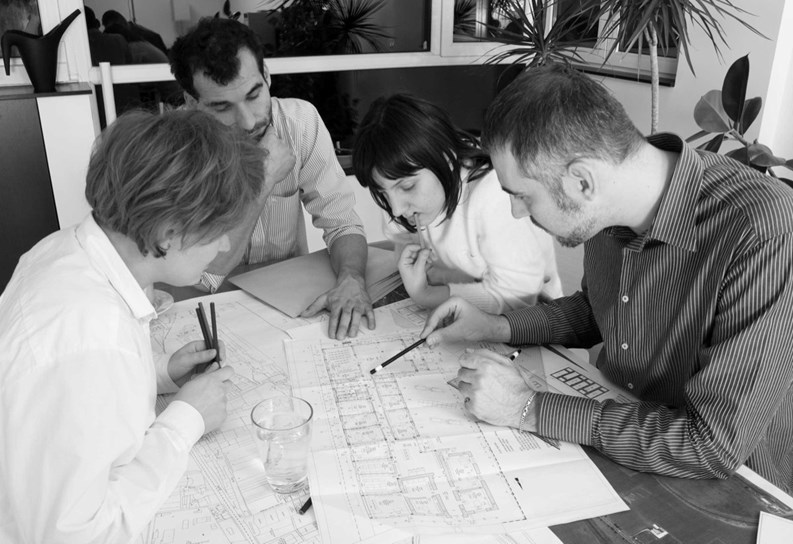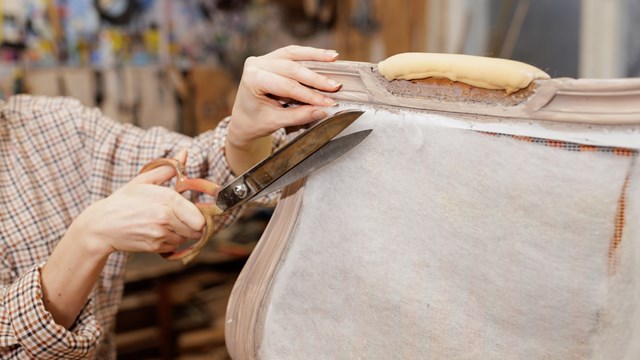Good communication is key to making any relationship work—married or dating couple, parent and child, sibling to sibling, and best friend forever friendships. In the co-op and condo world, boards also have relationships—with vendors, designers, contractors, residents, and managers, just to name a few.
Good communication is just as key to making those relationships successful. How important? Consider this: a board wants to renovate their lobby, or redesign their community room and needs to work with a design professional to get the job done. It’s vital for board members to communicate their goals and wishes effectively to the design professional hired to execute the job. If they don‘t, the board will be left with an exasperated, frustrated designer or architect, animosity amongst the board and a project that satisfies no one.
There is good news though: the designers interviewed for this article have not experienced working with an uncommunicative, divided or “nightmare” board. Instead, almost all of our sources said that they’ve been very lucky. The boards they have worked with have done a fine job organizing—and agreeing on—their ideas before bringing in a professional and getting their needs and wants across in a positive manner.
But of course, it’s Murphy’s Law that says, “Anything that can go wrong will go wrong” and there will be boards that don’t communicate quite so nicely. Karen Fisher, president of Design Previews in Manhattan, says that it’s inevitable that some boards are going to be in conflict. “Someone doesn’t want to do something that someone else does, or it comes out that they really didn’t have the money for something they wanted to do,” says Fisher.
Know Your Client
When you start dating, you move slowly and get to know the person you’re with. Board and designer relationships really aren’t all that different. The board reviews the designer’s sketches and ideas and the designer gets to know the board members. Hopefully it’s a good match on both ends and the designer will take on the project.
“We invest a significant amount of time getting to know the prospective client and demonstrating who we are and how we will interact with them,” says Joel M. Ergas, FASID, of Forbes-Ergas Design Associations, Inc., in Manhattan. “We share our thoughts and major concepts with them. Our guiding principle in accepting a project is that there are three criteria that must be met: First, there must be a basic agreement as to design approach. Second, there needs to be an agreement on a realistic budget to achieve the design objectives. Third, there needs to be an agreed-upon window of time to achieve the final results.”
That being said, Ergas explains that a common point of conflict in the board/designer relationship is impatience on the part of the board. “They do not understand that design is a process that should not be underestimated and that sufficient time must be allowed for that process to develop and mature,” he says.
On the flip-side, taking too much time to analyze can hinder the project as well. “Indecision and over-analyzing leads to the waste of time and energy on the part of the designer and the client,” says Ergas.
Every relationship needs balance. How many times have you heard about the girlfriend who dumps her gal pals when a new guy comes along? Or about a couple in which one person makes all the decisions without consulting their significant other? Relationships are about balance—and in this case, both sides need to be kept informed on what the other side is doing.
Managing Smarter
In addition, decisions need to be made on a timely basis. Once a project is decided on, designers and architects do not wish to be involved with any personal conflicts, or political brouhaha, among board members. Co-op and condo boards often are too controlling, says Avril Korman of Manhattan-based Damned Good Design. “The smaller the pond, the bigger the fish look. They can be consumed by their own personal power struggles, to the detriment of any project. They’re too busy fighting amongst themselves and jockeying for influence and power to pay attention to the project that’s on the table.”
Say, for example, your building has decided to redesign the lobby. The board members meet and review various design ideas from XYZ Design Professional. Unfortunately, Mrs. Smith hates using any kind of red in design and Mr. Jones is really pushing for a totally different look. Nobody can agree and although the board would probably settle the situation by a vote, telling the professional about the ongoing verbal sparring between Mrs. Smith and Mrs. Jones is not an effective way of getting this project done.
According to the professionals, too many cooks can spoil the broth. Or to put it another way: too many people—board members, managers, contractors, architects, designers—having too many opinions on one design project can effectively ruin the project. Instead, designers and architects recommend that the board form a smaller design committee to kick-start the project in the right direction. Committee members should be chosen carefully; members who may have experience in design, who have worked on board design projects before or who make decisions efficiently generally make better candidates.
“Not everyone on the board should be on the design committee,” says Korman. “Most people simply aren’t qualified to be there and become more of a drain than anything else. So one way [boards] can maximize their effectiveness is to make sure the right people are on the committee in the first place.”
Handling Conflict
Once you have a committee in place, a spokesperson should be appointed. The committee head should act as a liaison and return to the board with updates as well as provide information to the designer. “This facilitates communication between the board and the committee and keeps the project objectives on course,” says Ergas. “We don’t want to be included in every inter-committee email, but we do want to be given the final outcome by the point person.”
Ergas also suggests that committees include diversity and a cross-section of building representation. For example, on one lobby job, Ergas explains that the committee he was working with had a senior citizen member. “That member brought the experience of being a senior to the selection of lobby furniture,” he says. “It was a valuable point of view.”
When problems do arise, how they are handled depends on the problem. Tim Steele, owner of Tim Steele Art and Design in Manhattan, says that if an issue or conflict arises, he arranges to meet with the group to find out what the problem is. “We wouldn’t want to wait a month for a design meeting,” he says. “Instead, we would want to find out what the problem was and have a chance to explain our side of it so they can move on.”
Koray Duman, a registered architect and principal of Studio Urnod Manhattan says that he would suggest a conference call with all the parties that are involved. “Have everyone in one place at one time, especially if the problem is that everybody is going back and forth to get opinions from everyone else,” he says.
Of course, if you were to ask any relationship expert what the number-one cause of fights are in a relationship, they will probably tell you ‘money.’ Once again, the board/designer relationship is no different. “The board wants to do everything as inexpensively as possible,” says Korman. “Everyone does. But when dealing with multiple units in particular, they will try and cut a deal.”
Fisher says that this is when discussing budgets needs to be done before the board or committee approaches the designer. “They need to decide up-front if they have the money to do a project,” says Fisher. “They don’t always.”
Think Out of the Box
To repair any existing problems, both sides should consider out-of-the box solutions. “We established a relationship with a building that wanted our firm but couldn’t afford our fee,” says Ergas. “We reduced the fee, but held them to a limited number of design meetings and options. It worked out to the advantage of the project.”
Successful boards realize that when they are working as a committee, they are not designing for their individual units. Instead, they are collaborating to decide on the best aesthetic approach for their building. When a board really commits to partnering with their design professionals, they allow room to consider different viewpoints and approaches to a project, and are willing to adjust their wants and expectations to fit budget and time constraints. The oft-repeated refrains about good communication and cooperation hold especially true when it comes to design projects—a good partnership will yield good results.
Lisa Iannucci is a freelance writer and author living in Poughkeepsie, New York.







Leave a Comment